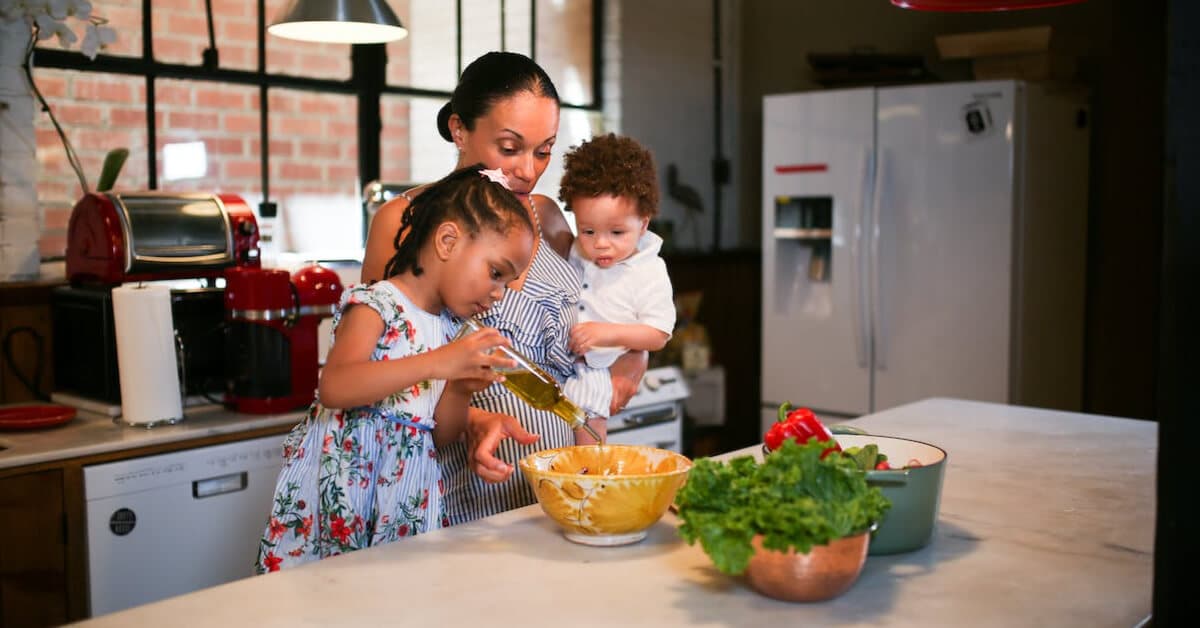Getting sole custody of your child in Australia involves several steps, and it’s important to note that the child’s best interests will always be the primary consideration in any custody decision. Here’s a general outline of the process:
- Seek Legal Advice
- Go Through Family Dispute Resolution (FDR)
- Apply to the Court
- Compile Evidence
- Undergo Court Proceedings
- Await Court Decision
Step 1: Seek Legal Advice
When dealing with how to get sole custody of your child in Australia, it’s essential to seek the advice of a family lawyer.
Every family law situation is unique, and a family lawyer can provide guidance based on your specific circumstances.
They consider all factors, including financial situations, the needs of the children involved, and the specific laws of your jurisdiction to help you how to get sole custody of your child in Australia. This ensures that the advice you receive is tailored to your situation.
Family lawyers also guide you through the legal processes involved in your case. They can help file the necessary paperwork, represent you in court, and negotiate with the other party.
Having an advocate on your side can be invaluable in stressful and emotional times. A family lawyer can represent your interests and fight for the best possible outcome.
Misunderstandings or missteps in family law matters can lead to substantial legal and financial repercussions. Consulting a lawyer can avoid common pitfalls and ensure you do everything correctly.
Remember, legal advice is not one-size-fits-all. Due to differing circumstances, what worked for one person may not work for another.
This is why it’s vital to seek personalised advice from a family lawyer when dealing with how to get sole custody of your child in Australia.
Also read: Equal Shared Parental Responsibility in Australia
Step 2: Go Through Family Dispute Resolution (FDR)
Family Dispute Resolution (FDR) is a form of mediation designed to help families reach an agreement over disputes, such as those related to how to get sole custody of your child in Australia, without needing court intervention.
This process is usually required before a person can apply for a parenting order, which is a legal document specifying the responsibilities of each parent concerning the care of their children after a separation or divorce.
FDR can be beneficial as it tends to be less adversarial than court proceedings, potentially reducing stress for all parties involved.
Additionally, FDR may be more cost-effective and faster than going to court. A key objective of FDR is to keep the focus on the best interests of the child or children involved in the dispute.
The process typically involves the following steps:
Preparation: Before starting the process of how to get sole custody of your child in Australia, each party might seek legal advice to understand their rights and obligations. They also need to be prepared to discuss and negotiate terms for parenting arrangements.
Mediation: A neutral third party (the mediator) facilitates a discussion between the parties involved. The mediator’s role is not to decide the outcome but to help guide the conversation productively and encourage mutual understanding and cooperation.
Agreement: If an agreement is reached, it may be formalised in a Parenting Plan or, if necessary, made legally binding through a Consent Order, a written agreement approved by the court.
Failure to reach an agreement: If parties cannot agree on how to get sole custody of your child in Australia, the mediator can issue a certificate (in Australia, for example, a ‘Section 60I certificate’) that allows the parties to proceed to court for a decision.
In certain circumstances, parties may be exempt from attempting FDR, such as in cases involving family violence, child abuse or when there is an urgency to the situation.
These exceptions recognise that FDR might not be suitable or safe in all circumstances and that the welfare and safety of the child and the parties involved should always be prioritised.
Need a Lawyer?
Step 3: Apply to the Court
In some situations, FDR may not be suitable or successful in how to get sole custody of your child in Australia. This could be due to several reasons, such as ongoing domestic violence, the refusal of one party to participate, or the inability of both parties to reach a mutual agreement.
Applying to the Family Court for a parenting order may be the next step in such cases. Here’s a more detailed look at this process:
Step 4: Compile Evidence
Compiling evidence on how to get sole custody of your child in Australia is a crucial step. This evidence should support your claims that granting you sole custody is in the child’s best interest. Here’s more detail on the types of evidence you may need:
Child’s Relationship with Both Parents: This might include testimony from a psychologist or family counsellor who has worked with your family. You could also provide school records or other documentation demonstrating the child’s relationship with each parent.
History of Family Violence or Child Abuse: This is a serious matter; evidence of abuse must be presented. This could be police reports, restraining orders, medical records, and statements from social workers or mental health professionals. Photos of injuries and property damage can also be included if relevant.
Each Parent’s Ability to Provide for the Child’s Needs: You’ll want to demonstrate that you have the financial, emotional, and physical capacity to care for the child. This might include pay slips or tax returns to show financial stability, evidence of a suitable living environment, like photographs of your home, and information about your schedule and availability.
Child’s Views: In many jurisdictions, a child’s views can be considered if they are of an appropriate age and maturity. In such cases, a child might be asked about their preferences by a judge, a court-appointed mediator, or a child psychologist. Documentation from these conversations can be included as part of your evidence.
Mental and Physical Health of Parents: Any information about both parents’ mental and physical health can also be significant. This might include medical records, statements from healthcare providers, or evidence of drug or alcohol abuse.
Continuity and Stability: Courts often prefer to disrupt the child’s routine as little as possible. Evidence that supports your ability to provide a stable, consistent environment — like maintaining the same school and community ties — can be helpful.
Willingness to Facilitate Contact with the Other Parent: If you seek sole custody, the court will still want to see that you’re willing to facilitate a relationship between the child and the other parent (assuming it’s safe and appropriate). Evidence might include correspondence showing your efforts to arrange visits or shared activities.
Step 5: Court Proceedings
If your case proceeds to court, you’ll present your evidence, and the other parent will have a chance to respond.
That’s how the court process works in how to get sole custody of your child in Australia. The court may appoint an independent children’s lawyer to represent the child’s interests.
Step 6: Await Court Decision
Ultimately, the judge will decide based on the child’s best interests. If they agree it’s best for the child to live with you and for you to have sole parental responsibility, they’ll make a parenting order.
What Are The Documents I Need When Applying for Full Custody of a Child?
Applying for full custody of a child involves several legal documents and can be complicated. You will need the following documents:
- Application for Consent Orders (if both parents agree) or Initiating Application and Affidavit (if you’re applying to the court to make decisions): These are the primary legal forms you will fill out when applying for full custody of a child. They ask for information about you, the other parent, and your child or children.
- Parenting Plan or Parenting Order: If you and the other parent have agreed on the terms of the custody arrangement, you may draw up a Parenting Plan. If you want to make this agreement legally binding, you should apply for a Parenting Order in the form of a Consent Order.
- Affidavit: This is a sworn statement where you can present your evidence and tell your side of the story to the court. This will detail why you believe having sole parental responsibility is in the child’s best interests.
- Notice of Risk: This is mandatory in all parenting applications where you disclose any child abuse or family violence risks.
- Certificate from a Family Dispute Resolution practitioner (section 60i Certificate): If you’re required to attend family dispute resolution (generally a prerequisite for applying to a court for a parenting order), the practitioner will issue a certificate that must be filed with your application.
- Other documents: Depending on the specifics of your case, you may need to provide additional copies such as police reports or medical records (in case of allegations of violence or abuse), school records, and letters from therapists or counsellors.
Applying for Full Custody of a Child, Where Can I File It?
Applying for full custody of a child is done through the Federal Circuit and Family Court of Australia. The Court is separated into two divisions, division 1 and division 2, with both divisions dealing with different types of matters:
- Division 1: Handles family matters only.
- Division 2: Deals with both family matters and general federal law matters.
On What Grounds Can A Parent Be Disqualified When Applying for Full Custody of a Child?
The courts usually encourage both parents to be involved in raising their children after a separation or divorce.
However, there are circumstances where one parent may be excluded from custody or have their parenting time limited.
These generally revolve around situations where the welfare and safety of the child are at risk. Here are some potential grounds for such exclusions:
- Family Violence or Child Abuse: One of the most serious considerations. If a parent has a history of violence or has abused the child, the court may determine that spending time with that parent is not in the child’s best interests.
- Substance Abuse: If a parent has a serious drug or alcohol problem that could endanger the child or negatively impact their well-being, the court may restrict their involvement in the child’s life.
- Mental Health Issues: If a parent suffers from significant mental health issues that could harm the child or disrupt their life, the court may limit or supervise contact between the parent and the child.
- Neglect or Failure to Provide Adequate Care: If a parent consistently fails to provide necessary care for the child, including neglecting their emotional, educational, or physical needs, the court may limit their involvement in the child’s life.
- Parental Alienation: If one parent consistently undermines the child’s relationship with the other parent by making false allegations or limiting access, the court may consider this when making custody decisions.
It’s important to remember that the court’s primary focus is the child’s best interests. Suppose a parent can demonstrate that they’ve addressed these issues (e.g., rehabilitation for substance abuse, treatment for mental health issues) and can provide a safe and nurturing environment. In that case, the court may reconsider the custody arrangement.
Does Full Custody Mean The Other Parent Can’t See The Child?
Not necessarily. Sole parental responsibility refers to decision-making about significant aspects of a child’s life.
Applying for full custody of a child doesn’t imply that the other parent cannot spend time with the child.
The court can order arrangements for the other parent to spend time with or communicate with the child unless it’s not in the child’s best interest.
The Australian courts generally uphold that it’s in the child’s best interest to maintain a relationship with both parents, provided it’s safe and appropriate to do so.
So even if one parent is granted sole parental responsibility, the other parent often maintains the right to spend time with the child and participate in their life, albeit to a lesser extent than the parent with sole parental responsibility.
The nature and frequency of this contact are determined based on the child’s best interests. This might be a regular visitation, overnight stays, or specific holiday arrangements.
The court might also order supervised visits, especially if there are concerns about the child’s safety or well-being in the company of the other parent.
However, in cases where the court finds it is not in the child’s best interests to have contact with the other parent due to a history of violence, abuse, or serious neglect, the court can limit or even terminate the contact rights of that parent.
Streamlined Sole Custody Process with Walker Pender Group
Our client, seeking to gain sole custody of her child while avoiding the stress and cost of court proceedings, approached Walker Pender Group.
We immediately initiated Family Dispute Resolution (FDR) procedures, navigating the client through this critical step.
We helped her compile persuasive evidence demonstrating her capacity as the primary caregiver and the benefits to the child’s well-being.
After skilful negotiation during FDR, we agreed with the other parent. This was formalised in a parenting plan and further solidified through a legally-binding consent order, thus achieving our client’s aim without court intervention.
Seeking Answers on How to Get Sole Custody of Your Child in Australia?
Walker Pender Group is here to help. We provide expert legal support to navigate this process with less stress and cost. Reach out to us today. Let us help you secure your child’s best interests.



